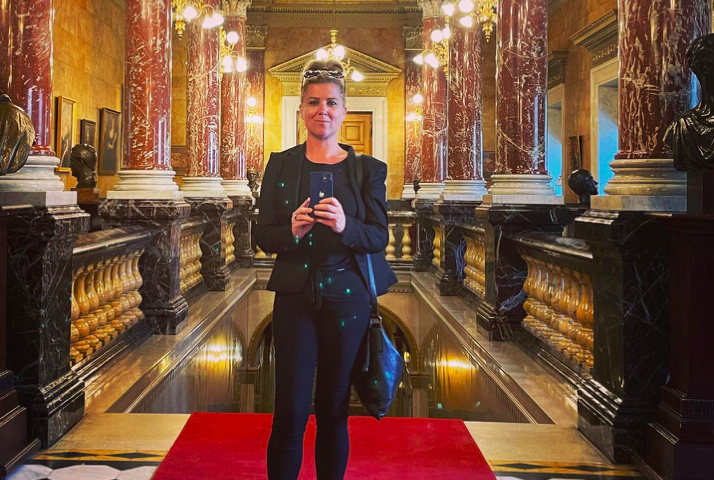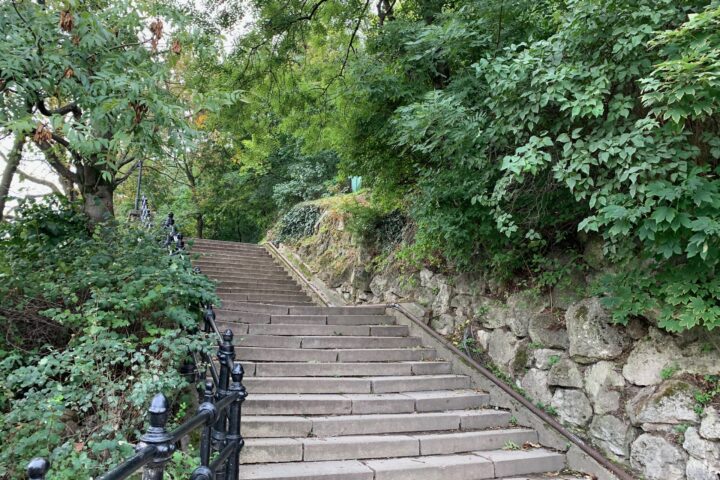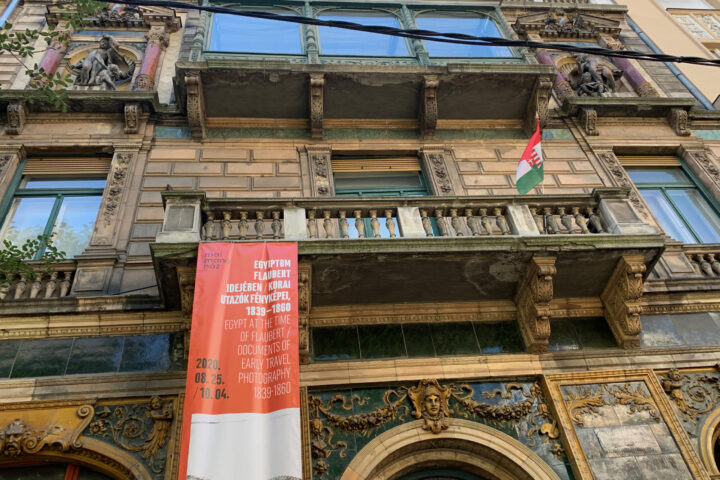The ruin pubs in the Jewish quarter of Budapest are very popular, I encourage my travellers to visit one or two during their stay in Budapest, it’s always a special experience. The biggest ruin pub is Szimpla in Kazinczy street, it isn’t just a bar, it’s also a great community. There is a farmers’ market every Sunday with some live music, great food and great drinks. Szimpla is open from 3.00 PM on weekdays, 12.00 PM on Saturday and 9.00 AM on Sunday.
I’m taking a lot of pictures on my tours in Budapest and around Hungary, however, I always forget to post on my Instagram. Especially during high season it’s difficult to post on Facebook, Instagram or my own blog, but believe me, I’m trying hard. Here are some pictures I’ve posted recently.
Thank you so much for sharing your reviews, it’s always a pleasure to see how much you enjoyed your tours in my Beautiful Budapest. I’m grateful for all the reviews shared on Google, TripAdvisor or on my website.
Here are a few ones of the most recent reviews:
My wife and I have been using private tour guides for many years as we have traveled the world. We consider it the absolute best way to experience, as fully as possible a new city, region or culture. Julia is one of the best private tour guides that it has ever been our pleasure to work with. Charming, witty, knowledgeable, professional, thorough and kind are just a few of her positive attributes. She greatly helped bring the Budapest area to life for us. We recommend her most highly.
We had a wonderful time with Julia. She is proud of her city and happily took us around to see it. She is knowledgeable, happy and very experienced. I would not hesitate to use her again. Recommended!
Julia is an outstanding tour guide! She is extremely knowledgeable, and very accommodating and flexible. We would highly recommend her tours if you are planning a trip to Hungary!
I’ve had the chance to visit the interior of the State Opera House shortly after it reopened after long years of renovation works. The interior is just magnificent. I’ve always felt overwhelmed by the style and grandeur of the building, and I wasn’t disappointed. I love the colours, the smells, the amazing Neo-Renaissance design and ornaments. Visiting the building is like a time travel to the late 1800’s.
I’d highly recommend to buy a ticket for an evening performance or to buy a ticket to visit the Opera – there are guided tours in English every day at 1.30 PM, 3.00 PM and 4.30 PM. Private tours are also available, please let me know if you’re interested, I’m happy to include the Opera visit in a driving or walking tour.
Many of us have been surprised earlier this year to learn that visitors need to buy a ticket to see the interior of St. Stephen’s Basilica. So far the general opinion was that the house of God is open for everybody and visitors only had to pay a small amount of donation at the entrance.
You need to buy the tickets in advance at the ticket office, which is located to the right of the church. The ticket price is HUF 1.200 (about EUR 3) per person. Be aware that during wedding ceremonies you are only allowed to a small part of the interior and the church is closed for visitors during church services.
I’ve had a group of interior design students from the US who booked an Art Nouveau tour with me. I thought they would be interested in seeing the villa of György Ráth, first director general of the Museum of Applied Arts of Budapest.
His home is an amazing source of inspiration for art lovers. One really feels like visiting a family with great sense of art and culture. The British, Austrian and French Art Nouveau are all on display and one can also admire the Oriental influence, as well as the Transylvanian roots appearing in Hungarian art at the turn of the century. The 600 pieces of art in the exhibition represent all branches of applied art: jewellery, furnitures, Zsolnay ceramics, Tiffany glassware, amazing paintings and sculptures.
The museum is open for the public from Tuesday to Sunday, from 10.00 AM to 6.00 PM.
The Citadel on the top of Gellért hill is being renovated, and unfortunately the entire area is closed because of the construction works. It also means that a truly popular tourist attraction of Budapest is closed and it’s impossible to enjoy the most magnificent views over Buda and Pest. The very bad news is that it remains closed for another few years and it’s impossible to estimate when it reopens. It’s just my personal opinion that they could have left a little path open for the tourists to enjoy the view, but that’s not the case.
You can still take a walk on Gellért hill, and you can climb to the statue of Saint Gellért from where you’ll have a great view over the Pest side of the river.
There are a few buildings that I love in Budapest, Mai Manó House is one of them. It’s such a special building near Andrássy avenue, full of little details and a facade that tells you many stories. We walk by the building very often while we discover the Pest side of the river.
It was designed for Mai Manó, photographer of Emperor Franz Joseph in the 1890’s. As he was a renowned photographer, his profession was clearly demonstrated on the facade, you can see the little angels holding cameras and you can also observe the muses of photography. The main front of the building is full of colours and is richly decorated by colourful ceramic tiles. The style is Neo-Renaissance with a lot of flower and animal motifs.
The House of Photography is home to permanent and temporary exhibitions, and the interior is just as fascinating as the outside.
A new museum opened in the City Park of Budapest, the museum of Hungarian Music. We had a private tour in the museum last week and were truly impressed by both the design of the building and the museum’s programmes and exhibitions.
The building was designed by Japanese architect Sou Fujimoto, to me it looks like an extremely ornate spaceship abandoned in the woods. For example I love the 12m high glass windows and panels and the hundreds of golden stylised leaves decorating both the interior and the outside. As a result it looks like a huge forest of gold, which is even more beautiful in the sunshine when the lights are nicely reflected on each and every gold leaf.
In the sound dome you can enjoy a unique audio-visual experience with sounds and music coming from all directions. I loved when all the sounds and music came together by the end of the show. It really felt like as if we witnessed a special chemistry experience in a musical laboratory. As an addition the permanent exhibition offers a musical journey in space and time. You must take some time to explore it, because you can easily spend hours in this underground musical maze. Music lovers should plan to spend some 2-3 hours in the building. Visitors can expect to get a better understanding of Hungarian music from the different periods of our musical history.
(On a personal note I have to add that I’m very much against all new constructions in the second largest public park of Budapest. The reason is that I think we should preserve and enlarge the green spaces in the city. However, I like the modern approach and the fact that the building is supposed to use sustainable and climate-friendly solutions.)
Last week we had the chance to meet and cook with chef Zita from BORGANIKA. Zita has an amazing gastro space in Klauzál market in the Jewish district. She offers cooking classes, all sorts of gastro events and she also hosts private dinners. She is amazing and is truly in love with Hungarian culture and food, all of my guests were fascinated by this unique culinary experience.
We cooked green pea soup, chicken paprikas with nokedli and strudel, it was a lot of fun, we enjoyed cooking and eating together and we also tasted some great Hungarian wines.
It’s a great experience for smaller and larger groups and her enthusiasm and professionalism will most probably brighten your day and contribute to an amazing Budapest experience.










































